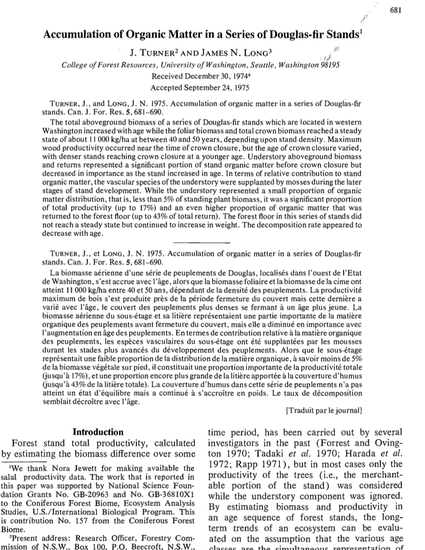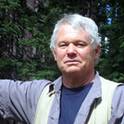
Article
Accumulation of Organic Matter in a Series of Douglas-fir Stands
Canadian Journal of Forest Research
(1975)
Abstract
The total aboveground biomass of a series of Douglas-fir stands which are located in western Washington increased with age while the foliar biomass and total crown biomass reached a steady state of about 11 000 kg/ha at between 40 and 50 years, depending upon stand density. Maximum wood productivity occurred near the time of crown closure, but the age of crown closure varied, with denser stands reaching crown closure at a younger age. Understory aboveground biomass and returns represented a significant portion of stand organic matter before crown closure but decreased in importance as the stand increased in age. In terms of relative contribution to stand organic matter, the vascular species of the understory were supplanted by mosses during the later stages of stand development. While the understory represented a small proportion of organic matter distribution, that is, less than 5% of standing plant biomass, it was a significant proportion of total productivity (up to 17%) and an even higher proportion of organic matter that was returned to the forest floor (up to 43% of total return). The forest floor in this series of stands did not reach a steady state but continued to increase in weight. The decomposition rate appeared to decrease with age.
Disciplines
Publication Date
1975
DOI
https://doi.org/10.1139/x75-094
Citation Information
James N. Long. "Accumulation of Organic Matter in a Series of Douglas-fir Stands" Canadian Journal of Forest Research Vol. 5 Iss. 4 (1975) p. 681 - 690 Available at: http://works.bepress.com/jameslong/216/
